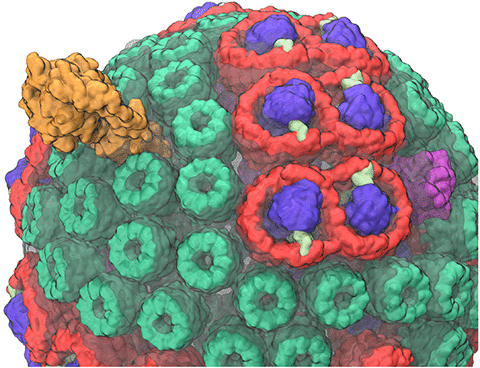Bioenergetic Membranes Spotlights

image size:
955.8KB
made with VMD
Most life on Earth is powered directly or indirectly by harvesting the energy of sunlight. Plants and bacteria convert solar energy into chemical energy, which is used, ultimately, for producing food. Compared to the complicated energy harvesting apparatus of plants, the primitive purple bacteria display a far simpler instance of photosynthesis. In purple bacteria, the energy harvesting processes are performed by a spherical vesicle, called the chromatophore, featuring hundreds of cooperating proteins assembled together on a membrane. A team of experimental and computational scientists have recently reported the overall efficiency of this energy conversion process based on a structural model. The energy conversion process in the chromatophore shows that the bacteria adapted to efficiently harvest light at the dim light conditions typical of their habitat. At bright light conditions, the bacteria instead dissipate the harvested energy to protect against damage. A step-by-step summary of the energy conversion processes in the chromatophore can be viewed in a video produced by high performance computing (YouTube video; discussed further in article 1 and article 2.) More on energy harvesting by bacteria can be found on our photosynthesis page and the chromatophore page.



